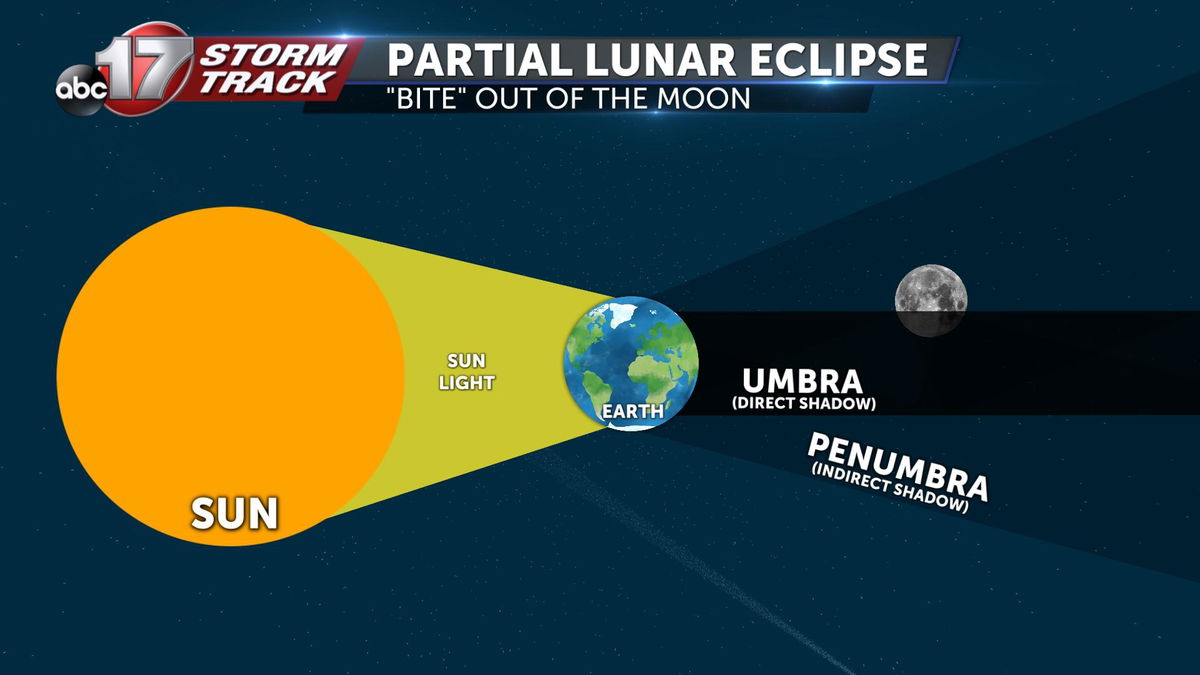What to know about tomorrow’s penumbral lunar eclipse
Tomorrow, a penumbral lunar eclipse will take place in the night sky. Now, this is a little bit different from a total or partial lunar eclipse that you usually might think of.
When the sun shines on the earth, a shadow is cast. Because of the way shadows work, one direct shadow is formed-- this is called the earth's "umbra". It causes near-total darkness for anything within it.
However, a secondary shadow also forms called a "penumbra". This can still cause an eclipse, but it can be a bit more difficult to pick up. It will be easier to pick out in rural areas or if you have access to a telescope!
Below are the three different types of lunar eclipses that can occur!
Example of a TOTAL Lunar Eclipse

Example of a PARTIAL Lunar Eclipse

Example of a PENUMBRAL Lunar Eclipse

Here's what you need to know to see tomorrow's eclipse

You may hear this moon called a "Buck" moon. The eclipse will start to show at 10:00 pm, peak by 11:30 pm and end at 1:00 am Sunday morning. You'll want to look in the southern skies.
Happy viewing!
-Luke
